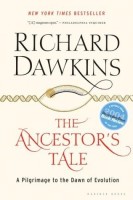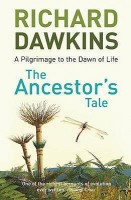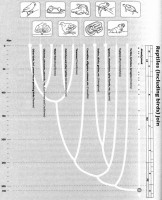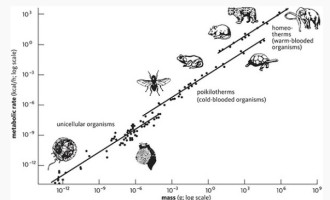 Title: The Ancestor’s Tale: A Pilgrimage to the Dawn of Life
Title: The Ancestor’s Tale: A Pilgrimage to the Dawn of Life
Author(s): Richard Dawkins
Translation: Brak
Release year: 2004
Publisher: Weidenfeld & Nicolson
Why in Database: NAn unusual case, book that we are describing in two separate notes. Two editions have been published, the second and subsequent editions often appears, but the differences are usually purely symbolic. However, here, out of the 13 turtle fragments that we found in the second edition, 2 were absent from the first edition and five were slightly changed and re-edited. So you can say that the differences are quite significant, hence the decision.
The first mention is that birds are more closely related to turtles (and other reptiles) than to mammals:
As a better reason for caution, extensive regions of DNA occasionally show up enigmatic resemblances between comparatively unrelated creatures. Nobody doubts that birds are more closely related to turtles, lizards, snakes and crocodiles than to mammals (see Rendezvous 16).
The next two mentions are about turtles in the context of how they see the world (and that they would probably be disappointed with how (technically) our televisions show the picture):
Most other vertebrates, such as fish and reptiles but not mammals, have three-cone (‘trichromatic’) or four-cone (‘tetrachromatic’) vision, and birds and turtles can be even more sophisticated.
Colour television and computer screens, doubtless because they are designed for our trichromatic eyes, also work on a three-colour system. On a normal computer monitor, each ‘pixel’ consists of three dots placed too close together for the eye to resolve. Each dot always glows with the same colour—if you look at the screen at sufficient magnification you always see only the same three colours, usually red, green and blue although other combinations can do the job. Flesh tones, subtle shades—any hue that humans might wish to see—can be achieved by manipulating the intensities with which these three primary colours glow. But tetrachromatic turtles, for example, might be disappointed by the unrealistic (to them) pictures on our television and cinema screens.
The next two fragments mentions (sea) turtles and fact, that they must come ashore for breeding purposes:
A whale floats. Unlike a seal or a turtle, which still comes on land to breed, a whale never stops floating.
Even turtles that are otherwise wholly marine haul themselves up the beach to lay their eggs.
Another mention is made in the context of the terminology related to how we divide animals:
Before we get to the mammal-like reptiles, we face a somewhat tiresome point of terminology. Terms like reptile and mammal can refer to ‘clades’ or ‘grades’—the two are not exclusive. A clade is a set of animals consisting of an ancestor and all its descendants. The ‘birds’ constitute a good clade. ‘Reptile’, as traditionally understood, is not a good clade because it excludes birds. Biologists consequently refer to the reptiles as ‘paraphyletic’. Some reptiles (e.g. crocodiles) are closer cousins of some non-reptiles (birds) than they are of other reptiles (turtles). To the extent that reptiles all have something in common, they are members of a grade, not a clade. A grade is a set of animals that have reached a similar stage in a recognisably progressive evolutionary trend.
Another mention is again, the turtles mentioned in the list of animals that are caught under the term “reptiles”:
At Rendezvous 16, approximately 4,600 mammal pilgrims greet 9,600 bird pilgrims and 7,770 pilgrims from the rest of the reptiles: crocodiles, snakes, lizards, tuataras, turtles. They are the main group of land vertebrate pilgrims. The only reason I am regarding them as joining us, rather than we joining them, is that we arbitrarily chose to see the journey through human eyes.
Another reference is interesting, it isa bout the issue of naming turtles in English, in different varieties of the language:
Seen through sauropsid eyes, the last to join their pilgrimage ‘before’ the rendezvous with us were the turtles (using the word in its American sense to include tortoises as well as aquatic turtles and terrapins).
The next two fragments are again, smaller mentions of turtles in the listings of various animals:
These, then, are the sauropsid pilgrims, the turtles, lizards and snakes, crocodiles, and birds, together with the huge concourse of shadow-pilgrims — the pterosaurs in the air, the ichthyosaurs, plesiosaurs and mosasaurs in water, above all the dinosaurs on land.
McGavin’s next candidate for an evolutionary one-off is a beauty. It is the diving bell spider, Argyroneta aquatica. This spider lives and hunts entirely underwater but, like dolphins, dugongs, turtles, freshwater snails and other land animals that have returned to water, it needs to breathe air.




Author: XYuriTT
